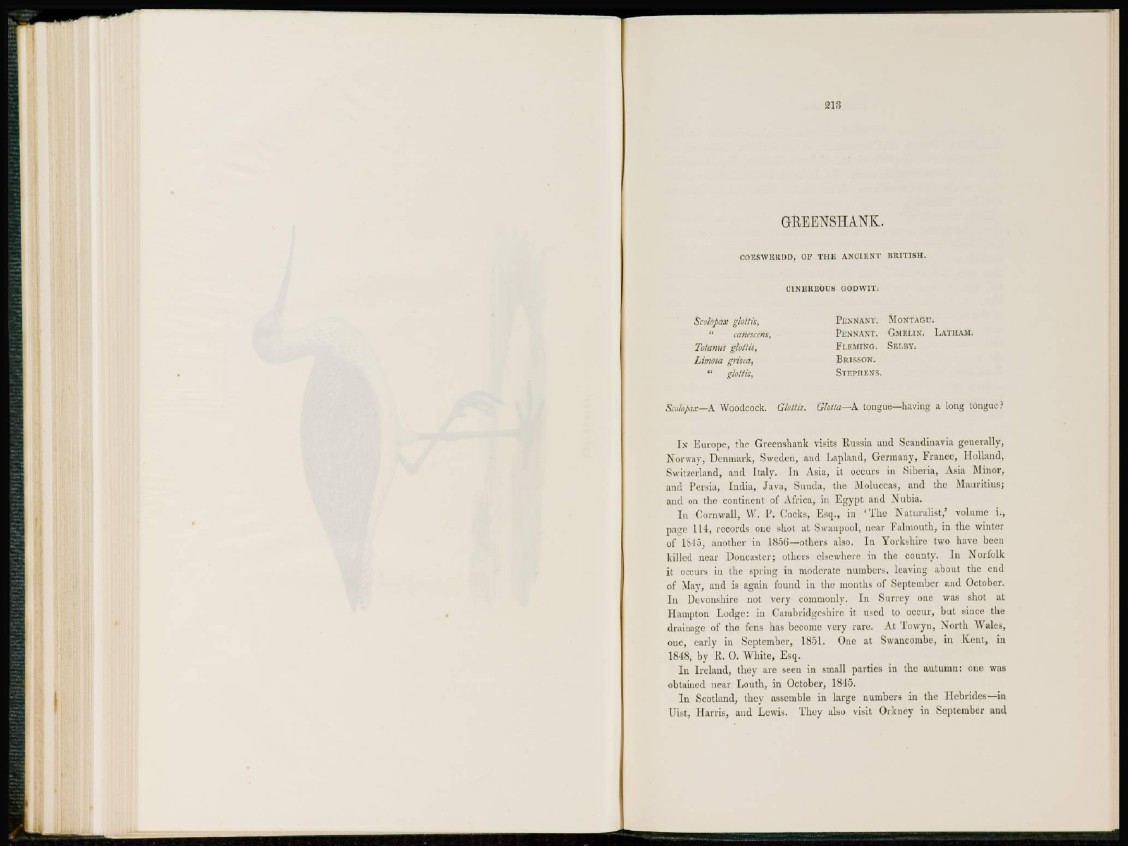
GREENSHANK.
COESWERDD, OF THE ANCIENT BRITISH.
CINEREOUS OODWIT.
Scolopaae glottis, PENNANT. MONTAGU,
cdntstms, PENNANT. GMELIN. LATHAM.
Totanus glottis, FLEMING. SELBY.
Lhnosa grisca, BRISSON.
" glottis, STEPHENS.
Scolopax—A Woodcock. Glottis. Glotta—A tongue—having a long tongue?
IN Europe, the Greenshank visits Russia and Scandinavia generally,
Norway, Denmark, Sweden, and Lapland, Germany, France, Holland,
Switzerland, and Italy. In Asia, it occurs Ín Siberia, Asia Minor,
and Persia, India, Java, Sunda, the Moluccas, and the Mauritius;
and on the continent of Africa, in Egypt and Nubia.
I u Cornwall, W. P . Cocks, Esq., in ' T h e Naturalist,' volume i.,
page 114, records one shot at Swanpool, near Falmouth, in the winter
of 1815, another in 1856—others also. In Yorkshire two have been
killed near Duncaster; others elsewhere in the county. In Norfolk
it occurs in the spring in moderate numbers, leaving about the end
of May, and is again found in the mouths of September and October.
I n Devonshire not very commonly. In Surrey one was shot at
Hampton Lodge: in Cambridgeshire it used to occur, but since the
drainage of the fens has become very rare. At Towyn, North Wales,
one, early in September, 1851. One at Swancombc, iu Kent, in
1848, by R. O. White, Esq.
I n Ireland, they are seen in small parties in the autumn: one was
obtained near Louth, in October, 1845.
I n Scotland, they assemble in large numbers in the Hebrides—in
List, Harris, and Lewis. They also visit Orkney in September and